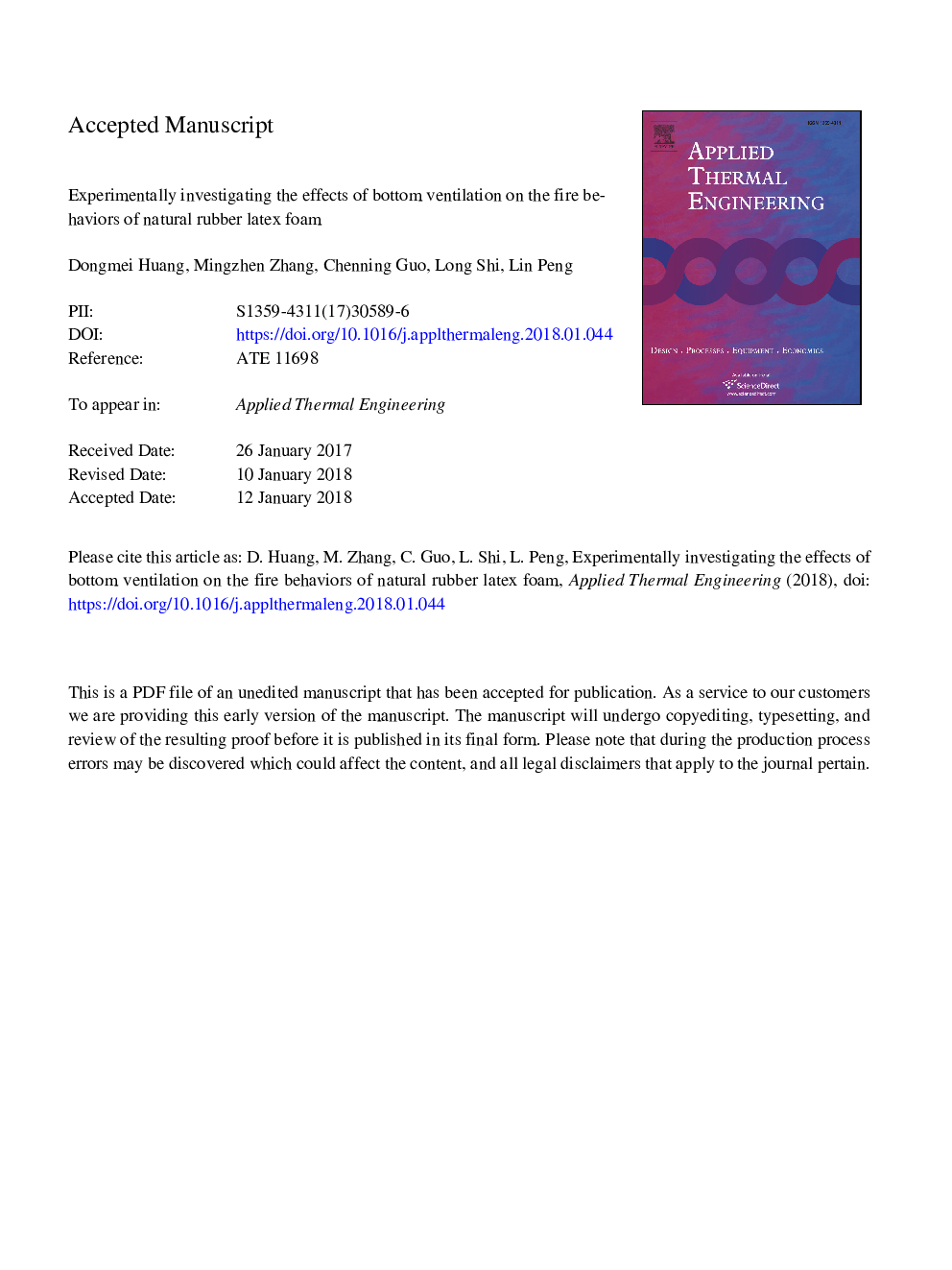| کد مقاله | کد نشریه | سال انتشار | مقاله انگلیسی | نسخه تمام متن |
|---|---|---|---|---|
| 7045876 | 1457096 | 2018 | 25 صفحه PDF | دانلود رایگان |
عنوان انگلیسی مقاله ISI
Experimental investigations on the effects of bottom ventilation on the fire behavior of natural rubber latex foam
ترجمه فارسی عنوان
تحقیقات آزمایشگاهی بر اثرات تهویه پایین بر رفتار آتش از فوم لاتکس لاستیک طبیعی
دانلود مقاله + سفارش ترجمه
دانلود مقاله ISI انگلیسی
رایگان برای ایرانیان
کلمات کلیدی
فوم لاتکس لاستیک طبیعی، سرعت پخش افقی افقی، تهویه پایین، انتقال گرما،
موضوعات مرتبط
مهندسی و علوم پایه
مهندسی شیمی
جریان سیال و فرایندهای انتقال
چکیده انگلیسی
Characteristics of easy ignition and high spreading risk make bedding materials extremely hazardous in an apartment fire. Typical bedding material, namely natural rubber (NR) latex foam with 6â¯mm diameter holes, was investigated experimentally in this study. Two ventilation conditions were considered: bottom ventilation (sample bottom was covered by stainless grid allowing air supply, denoted as BV); and normal ventilation (sample bottom was covered by insulation board avoiding air supply, represented by NV). The heat transfer process of the sample under the two ventilation conditions was then analyzed. It was known from experiment that samples under both ventilation conditions show three burning stages: initial growth, full development, and decaying. With sufficient oxygen supply, samples under BV conditions showed a higher hazard than those under NV conditions, companied with a longer time period of full development stage, bigger flame spread rate and bottom ignition. Flame spread rates at sample top were about 1.6â¯mm/s and 1.4â¯mm/s under BV and NV conditions, respectively. Only under BV conditions, sample bottom was ignited at about 157â¯s through one edge and also with some moving ignition points, while the maximum temperature rose to about 1200â¯K. However, maximum flame height under BV conditions showed a lower value than those under NV conditions, which is 0.51â¯m comparing to 0.59â¯m. The heat transfer mechanism of the sample was investigated, and the relationship of flame spread rate of the sample under both ventilation conditions is vp,BVvp,NV=1.34qÌf,BVâ³-Ï(Tig4+Tâ4)qÌf,NVâ³-Ï(Tig4+Tâ42).
ناشر
Database: Elsevier - ScienceDirect (ساینس دایرکت)
Journal: Applied Thermal Engineering - Volume 133, 25 March 2018, Pages 201-210
Journal: Applied Thermal Engineering - Volume 133, 25 March 2018, Pages 201-210
نویسندگان
Dongmei Huang, Mingzhen Zhang, Chenning Guo, Long Shi, Peng Lin,
